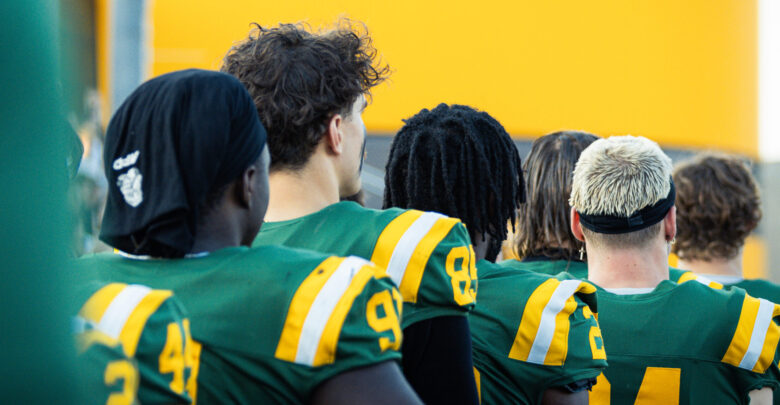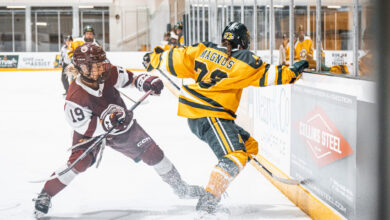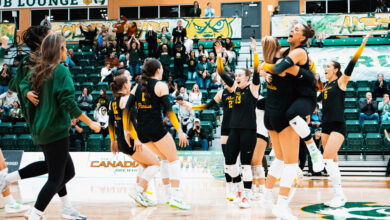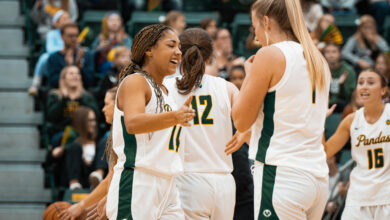CFL’s rule shake-up puts U Sports football at a crossroads
Major CFL rule changes leave U Sports with a tough decision.
 Graeme Kelly
Graeme Kelly The Canadian Football League (CFL) dropped a bombshell on September 22 with the announcement of sweeping rule and field changes set to roll out by 2027. From moving goalposts to modifying the rouge, the CFL is reshaping its game with a clear goal: more touchdowns, more excitement, more fans. But as the professional league redraws its field, U Sports football — and programs like the University of Alberta Golden Bears — now face a pressing question: should Canadian university football follow suit?
For U Sports, the CFL’s move is more than just background noise. The two organizations are deeply linked. Nearly 70 per cent of players drafted in 2025 came from Canadian universities, with six Mustangs and dozens of other U Sports alumni landing roster spots. The CFL relies on U Sports to supply homegrown talent, and U Sports players dream of playing under the Grey Cup lights. That pipeline works because the two games are nearly identical — until now.
The CFL’s biggest changes are scheduled for 2027. Goalposts will move to the back of the end zone, end zones will shrink from 20 yards to 15, and the field itself will contract from 110 to 100 yards. Next year, 2026, fans will already see a modified rouge that removes “cheap” single points on kicks that sail untouched through the end zone. A new 35-second play clock and benches on opposite sidelines are also on the way. Commissioner Stewart Johnston called it “the most significant change in decades,” promising that the CFL is “trading field goals for touchdowns, while improving fan experience.”
That sounds like entertainment gold for the pro game. But for U Sports, it’s a dilemma. Do they keep the traditional field, maintaining a version of the Canadian game untouched by modern tweaks? Or do they adapt in order to mirror the CFL and ease player development?
The Golden Bears are right in the middle of that conversation. Their Canada West conference already faces the challenge of building fan bases in cities where CFL teams dominate attention. Aligning with the pro game could give student athletes smoother transitions and keep fans from having to mentally switch between two slightly different codes. On the other hand, clinging to tradition carries pride: university football could present itself as the guardian of “pure” Canadian rules, especially at a time when critics fear the CFL is inching closer to American-style football.
U Sports has already acknowledged the stakes. In a brief statement September 22, the governing body said “U Sports will begin engaging with our members and stakeholders over the following weeks and months to determine the ramifications for U Sports football, and the best course of action for U Sports.” The statement promised that any proposed changes would go through the proper committees, but offered no timeline.
That vagueness leaves coaches, players, and fans guessing. Many fans, including British Columbia Lions Quarterback Nathan Rourke, see the changes as unnecessarily tampering with a game that already worked. Others argue that entertainment value is essential in an saturated market of sports leagues. If fans are craving more touchdowns and drama, then resisting change might be a recipe for irrelevance.
For the Golden Bears, who compete in one of the toughest university divisions in the country, the impact could be both practical and cultural. Infrastructure matters: if CFL stadiums reconfigure their fields, schools like Calgary, Ottawa, or Manitoba, may have no choice but to adapt, as their home field is a CFL stadium. This may force U Sports Football to follow suit across the country, since relocating multiple teams’ home field is unconventional.
The bigger picture is identity. Canadian football has long stood apart from its American cousin: three downs, a wider field, the waggle. Fans cherish those quirks as symbols of national pride. If U Sports holds fast to the old rules, it could double down on that uniqueness, carving out a role as the keeper of tradition. But if the CFL’s experiment succeeds, resulting in a more entertaining product, sticking to the old ways could make university football look stale.
This decision doesn’t exist in a vacuum. It comes at a time when tensions between Canada and the United States feel especially raw. Football has always been more than just a game here. For generations, the unique Canadian style has been a subtle but powerful marker of our identity. It has quirks, but its our game.
Now the CFL is making changes that nudge the sport closer to the American game, whether by shrinking the field or eliminating the quirks that baffled outsiders but thrilled Canadians. That raises a question far larger than the dimensions of a football field. Is adopting American traits into one of our national pastimes worth the payoff of more touchdowns and faster play? Or is this simply another quiet step in the steady Americanization of Canadian culture?
Right now, U Sports football stands at a crossroads. The CFL has rolled the dice on entertainment. The Golden Bears and the rest of Canada West must soon decide whether to play along with them, or to plant their cleats in the turf of tradition.




